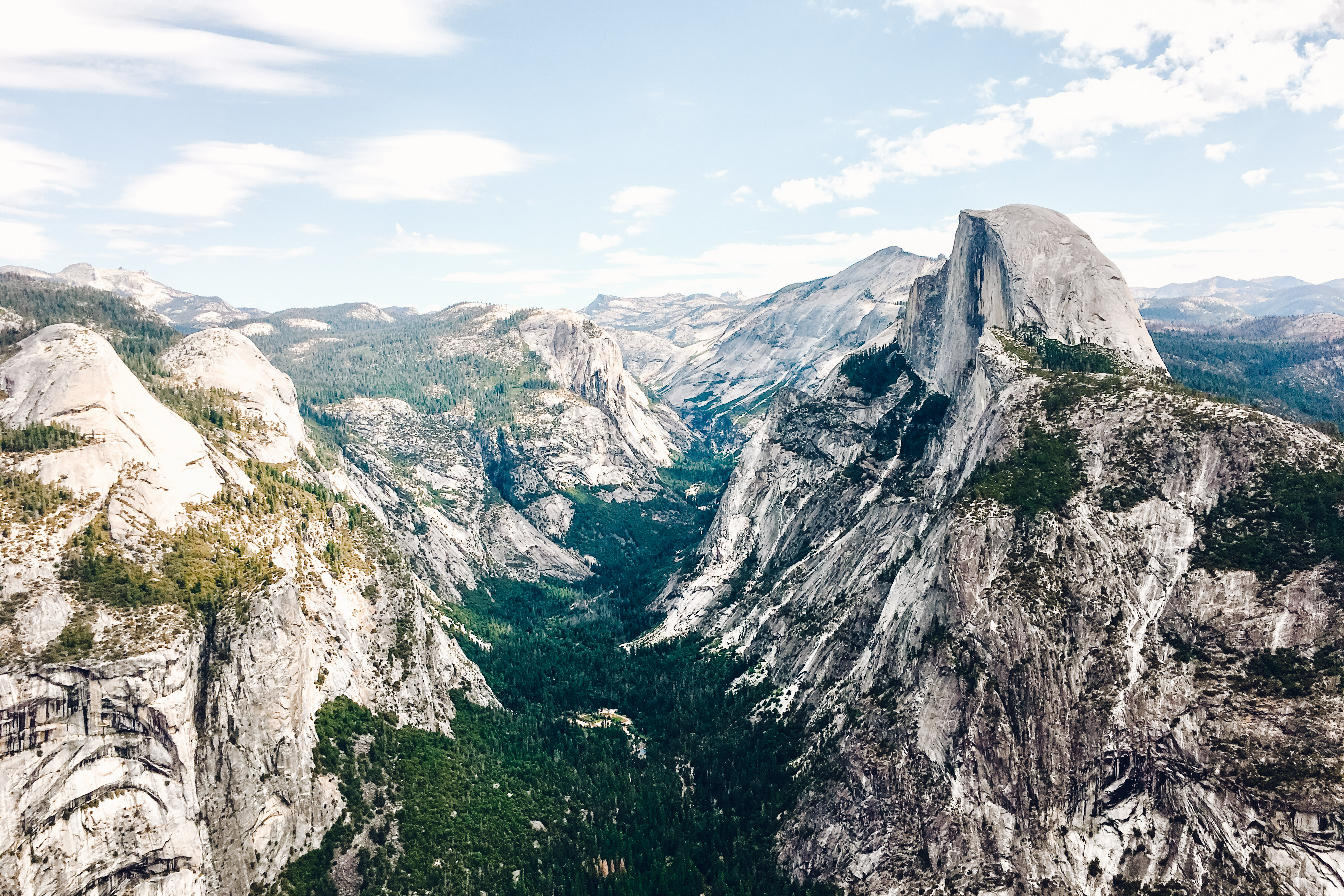
I worry that wild camping in Yosemite National Park may have doomed my relationship with The Husband. As an avid rock climber, there are few places in the world more magical to him than the towering El Capitan in Yosemite. After extensive research I found a camping spot immediately in front of El Cap, meaning he woke up on his thirtieth birthday to watch the sun rise over the Dawn Wall. I fear I shall never, ever be able to top this…!
Yosemite National Park is possibly the most famous of all the 61 US National Parks and it is not hard to see why. It has some of the most spectacular landscapes in all the States. And the USA is not exactly short on spectacular landscapes!
The Yosemite Valley is a mile-wide, 7-mile-long canyon hemmed in by huge granite walls and cascading waterfalls. It is a mecca for hikers, rock climbers and tourists from around the world – almost 4.1M people visit per year! With all those people, I was concerned that it would feel more like Disneyland than the wild Californian wilderness I had read about. It is true that the Valley was busy – albeit fun – but the minute you step away from the more established trails and tourist spots, you can easily find the solitude and tranquillity that John Muir intended the park to offer. And wild camping is the ultimate way to do it.
Wild camping – known as backcountry camping to my American friends – is camping away from a specifically designated camping site. I think wild camping in Yosemite is a great place to make your first foray into wilderness camping as you can easily chose to be as close or as far from civilisation as you like. This guide will give you lots of tips on how to get a highly coveted Yosemite Wilderness Permit, where to wild camp and which trails to take.
Need to Know
Where California
Established 1890
Total Size 748,436 acres/3,028.8 sq km
Highest Point Mount Lyell (13,114ft / 3,997m)
Native Land Ahwahneechee
Entrance Fee $30 per vehicle; $15 per individual
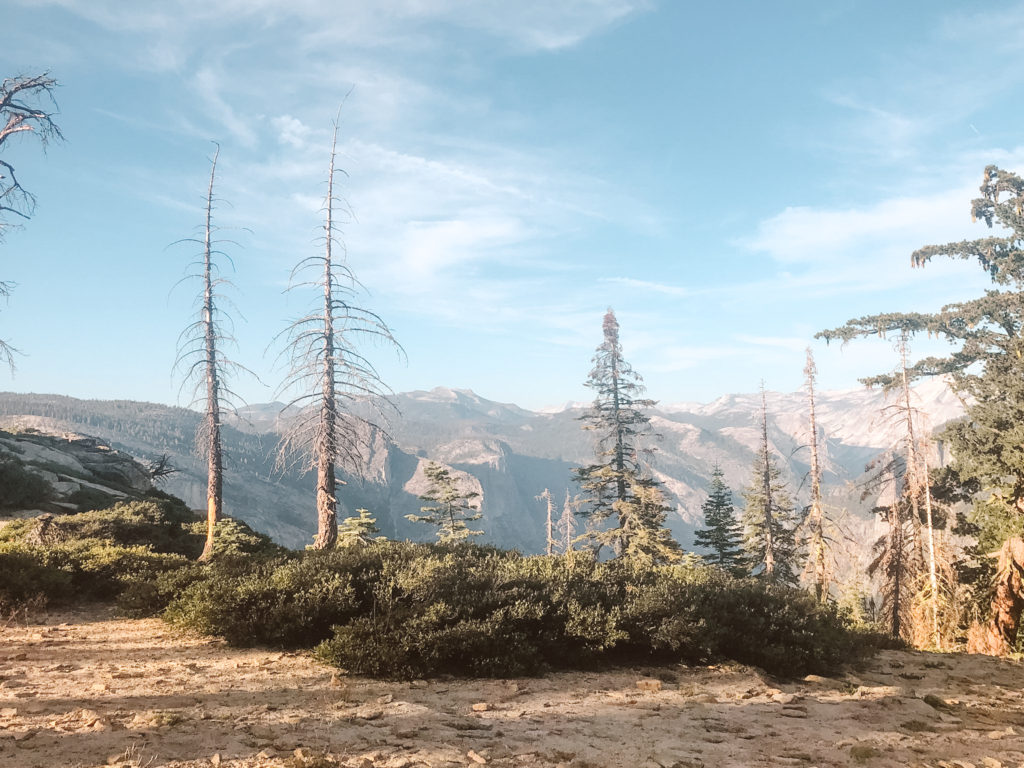
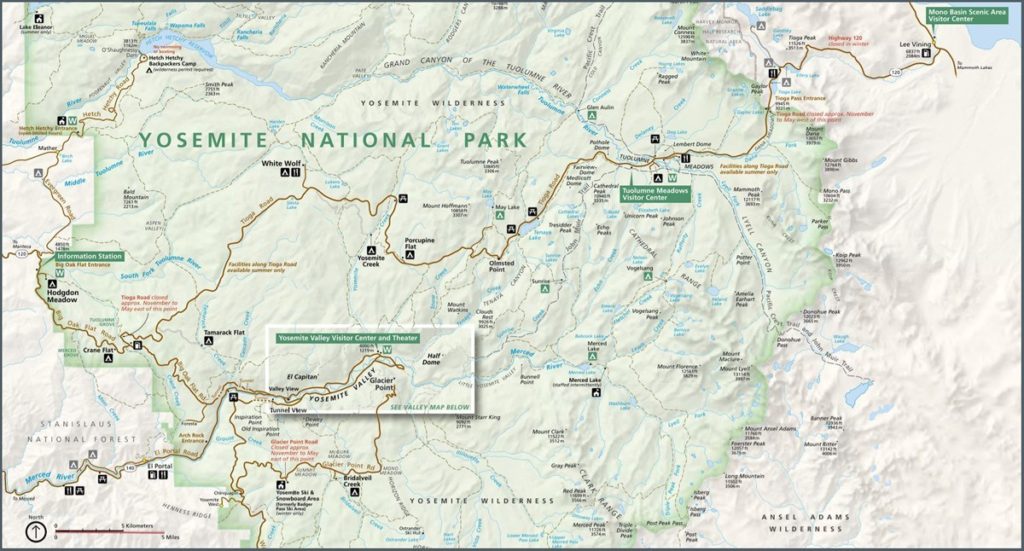
WHEN TO GO
The Valley is open all year around, but your experience will vary considerably depending on when you visit. Especially if you are going specifically for wild camping in Yosemite! In Spring, the waterfalls will be in full force, whilst Summer weather ensures all the trails are open, but it can be very hot hiking. Autumn sees glorious colours, and winter is the quietest time of year.
If you want to hike, I think May or September are the best months – trails will likely all be snow free, and although busy, you can still get away from the crowds.
For climbing, early spring and late autumn offer the best blend of dry, but cooler, weather with fewer crowds.
GETTING AROUND
The easiest way to get to, and get around, Yosemite is to bring your own vehicle. Although the traffic in the Valley can get insane in peak months, it offers you the most flexibility and control. Just be sure to fill up your car before you enter the park if possible – the cost of petrol in the Valley was eyewatering (even for a Brit!).
However, many of the trails start and finish in different places, and if you don’t want to do a there-and-back you will need to find a way to get back to your car (or preposition your car at the end, and get back to the start).
There are two free Yosemite Valley shuttle buses – the Valley shuttle and the El Capitan shuttle. They offer a convenient way to get around the Valley, and are a good option at the end of a trail. Timings and routes are on the NPS website.
Hitchhiking is your other option – simply approach people in the car parks and ask if they are going in your direction! As a Brit, hitchhiking is very unfamiliar – we are all brought up being told strangers are danger, and tales of horror that follow after you get into a stranger’s car! I therefore found it really strange that this was a thing in the US. But it was absolutely fine, and we met some really interesting people. Clearly follow all the usual safety rules – it is best to hitch in pairs, and trust your instincts if something doesn’t feel right.
Bear Safety
I am not going to lie, I was terrified about bears whilst wild camping in the US! Full on, wake-The-Husband-multiple-times-a-night-because-a-leaf-rustled, petrified.
Yosemite was the only place we saw a bear during all of our camping expeditions. And when it actually came down to it, it was one of the most amazing experiences of my life! A small black bear (who was actually toffee coloured), ambled along the other side of a stream whilst we dipped our feet. The Husband and I were the only the only people around for miles and the bear calmly wandered off into the forest. He didn’t even glance at us!
Read the National Park Service guidelines carefully before heading out in to the wilderness. I also supplemented my reading with Bill Bryson’s wonderful A Walk in the Woods, which with hindsight was a severe error as he was facing much scarier grizzly bears!
It is very important to follow the guidelines – both for your safety, but also the bears. If bears become too familiar with humans, they can become aggressive, meaning the park rangers may need to put them down.
Bear canisters are mandatory in Yosemite – and bear spray is prohibited. This is because it is intended to give bears a negative experience in a particular area, not scare the bear away. This can interfere with their natural habitats. We rented our canister from REI. The first night was $8, and each subsequent night was $2. The established campsites in Yosemite also have bear lockers.
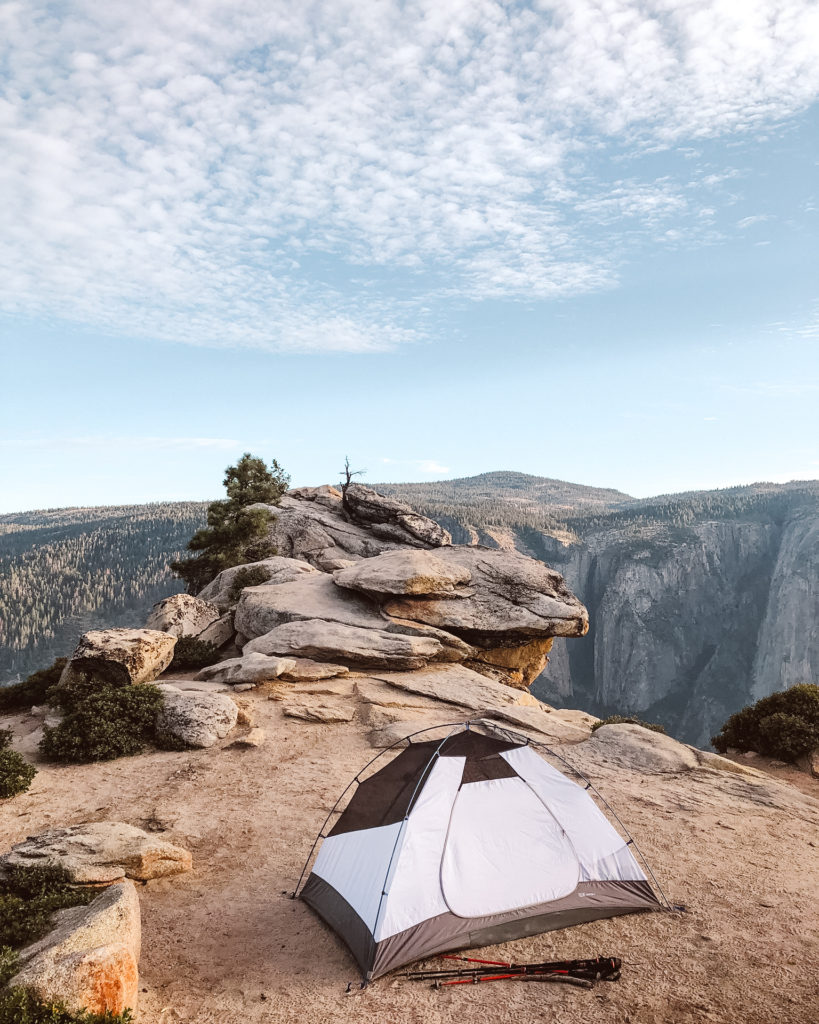
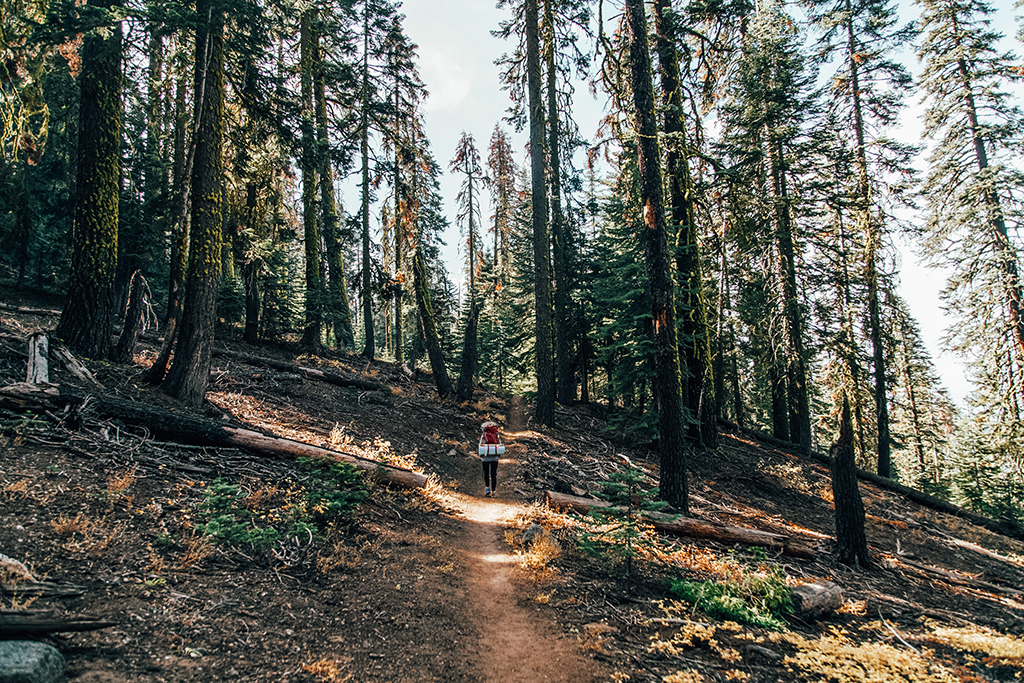
GETTING A PERMIT
Day hikers do not need a permit for Yosemite, other than to climb Half Dome. But for wild camping in Yosemite, you need a Wilderness Permit and to follow the Wilderness Regulations. Given the popularity, this can be tricky and there are horror stories splashed across the internet. But with a bit of planning, and some flexibility, it does not need to be impossible.
Be sure to check the National Park Service website for all of the most up to date information on permits and hiking.
Wilderness Permits are available year around, but numbers are limited depending on the trail you wish to hike. Your pass will be linked to the trailhead you plan to start your trip at. You have two options for getting your pass – either apply in advance, or turn up before 11am on the day of your hike and obtain it in person a first-come first-served basis. Of the numbers permitted each day, 60% can be reserved, while the remaining 40% is for walk-ins.
The key to getting permits is flexibility – if you know exactly which hikes you want to do, then you need to book far in advance and hope you get lucky. Wilderness permit reservations are done by lottery 24 weeks (168 days) in advance of the hiking start date. The most popular are booked out immediately, so if you are set on a particular route be sure to work out exactly which day to apply!
But if you are open to trying different areas of the park, there are always permits available. The Yosemite Conservancy website has a very useful planning report, which shows which trails are full and which have availability. I used this extensively – combined with the NPS trailhead map – to check which trails were available when we were there, and planned our hikes accordingly.
Alternatively, you can try an on-the-day permit. The National Park Service staff are incredibly knowledgeable and can help you plan a route depending on what is available. Just be sure to get there early to give yourself the most choice.
Once you have your permit, you can camp anywhere you like provided you follow the Wilderness Regulations.
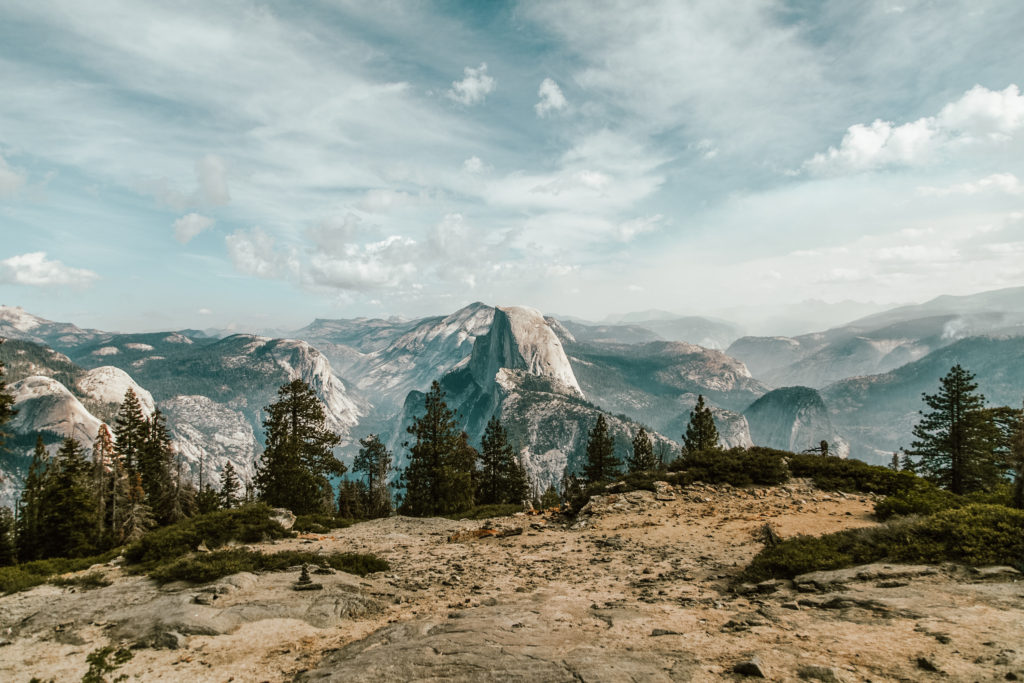
Yosemite for Non-Hikers
Although this post is focused on hiking and wild camping in Yosemite, there are plenty of more accessible adventures to be had in the park.
Drive the Valley Floor – you will see all of the most famous sights: Yosemite Falls (you can walk the 1-mile Lower Yosemite Falls trail), El Capitan, Sentinel Bridge and Valley View. Traffic can be extensive in summer so plan plenty of time.
Tunnel View – the most iconic view of Yosemite over Half Dome, Bridalveil Falls, El Capitan, and the whole Yosemite Valley. Immediately after the Wawona Tunnel.
Glacier Point – short paved trail from the car park to the view point. Impressive views over Half Dome, Nevada Falls, Vernal Falls and the valley floor. Come at sunset for amazing colours.
Mariposa Grove – see the giant sequoia trees. The Big Trees Loop is a 0.3 mile, wheelchair accessible, trail.
Tioga Road – scenic drive with viewpoints at Olmsted Point, Tenaya Lake Scenic Overlook, and Tuolomne Meadow.
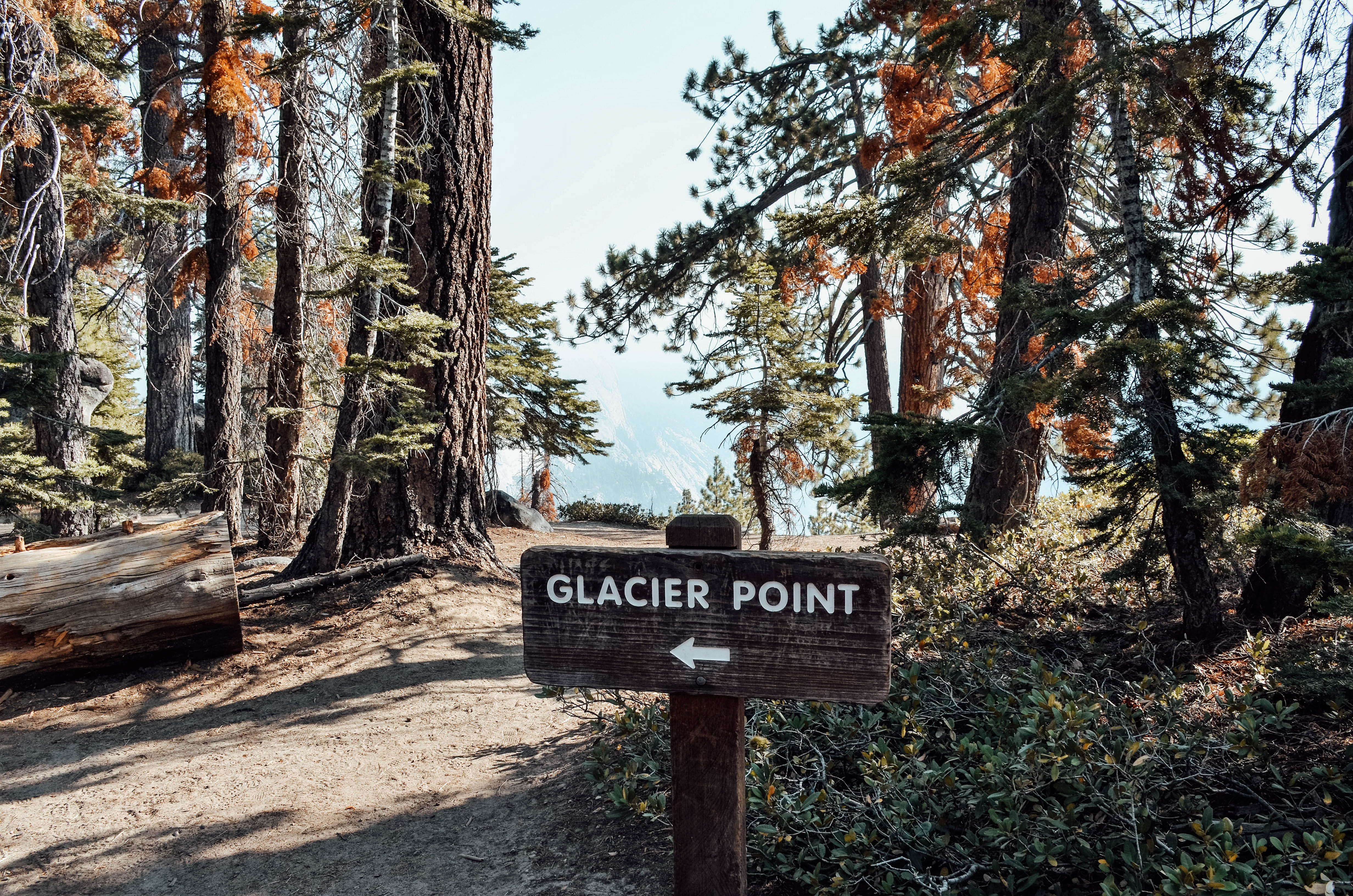
MY THREE FAVOURITE TRAILS AND WHERE TO CAMP
THE POHONO TRAIL
Distance 13 miles/20.9km
Elevation Change 2,800 ft /850m
Difficulty Moderate
Trailhead Glacier Point or Tunnel View
Camp Site Dewey Point (Coordinates)
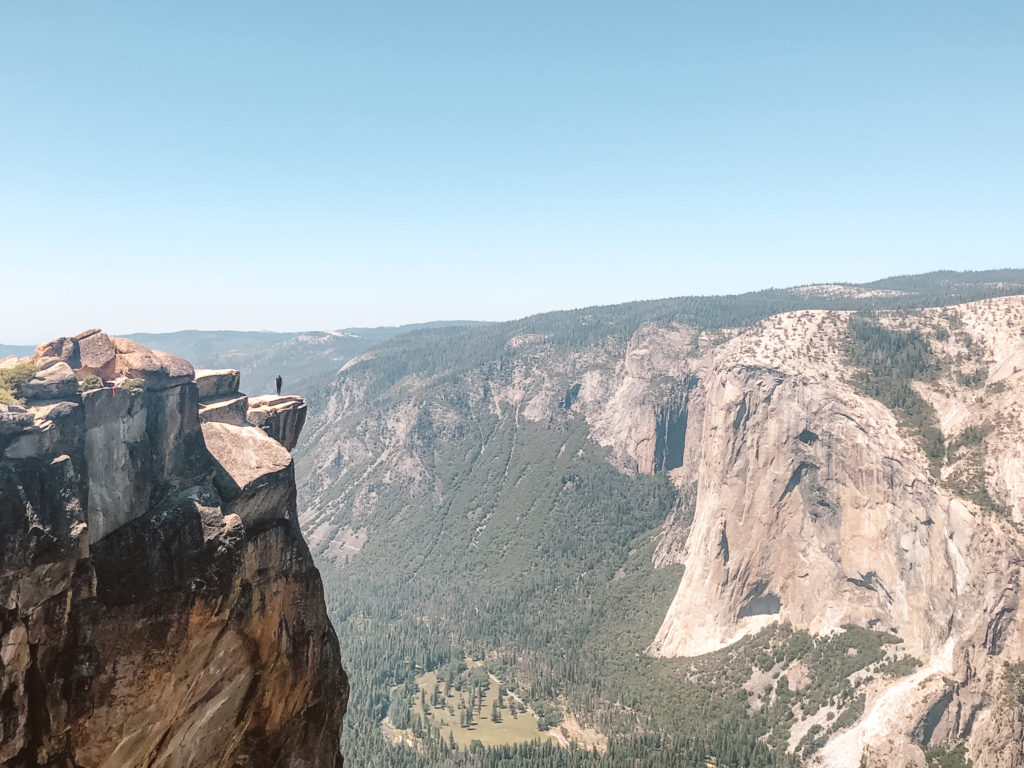
Most commonly hiked from Glacier Point to Tunnel View, as it is downhill. The trail mostly follows the southern rim of the Valley, and gives views of Taft Point, Dewey Point, Crocker Point and Stanford Point. You can choose to add a 0.5 mile (0.8km) side trail to summit Sentinel Dome.
I really loved this trail as the perfect introduction to Yosemite – the views are fantastic, the scenery varied (from thick forest, to picturesque babbling streams, to dry, arid rocky outcrops) and the hiking not too strenuous. I am amazed more people don’t do it! Especially as you could do it in a day hike if you wanted to avoid camping.
This is, without doubt, the most beautiful wild camping spot we found in Yosemite! Watching the sun go down, and rise again in the morning over the face of El Capitan was a seriously memorable experience. I didn’t manage to pack out a cake, but I did take birthday cookies for The Husband!
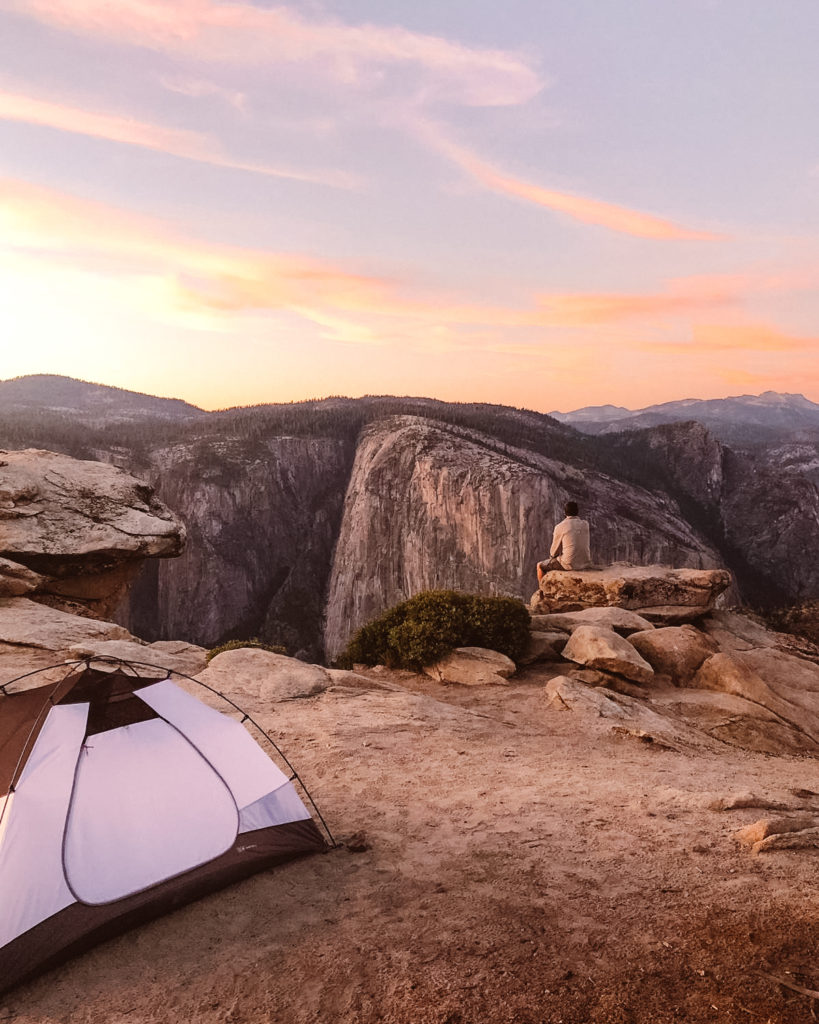
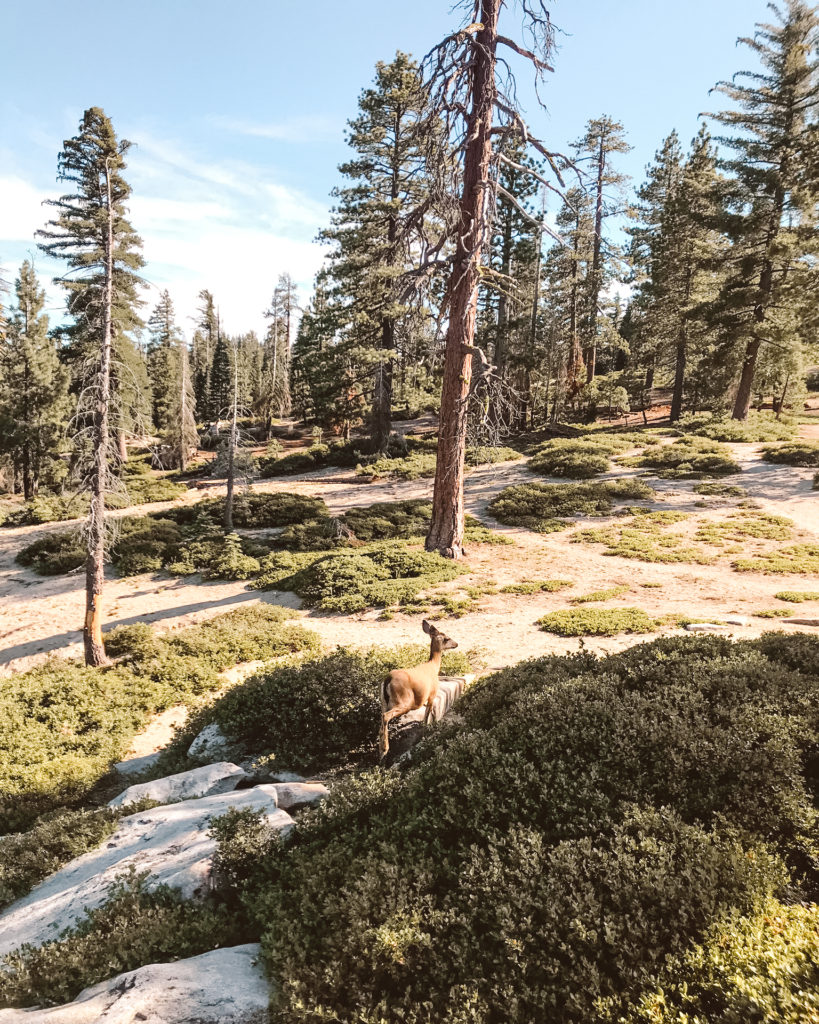
MOUNT WATKINS
Distance 6.2 miles/10km
Difficulty Easy
Elevation Change 1049ft /320m
Trailhead Olmsted Point
Camp Site Mount Watkins (Coordinates)
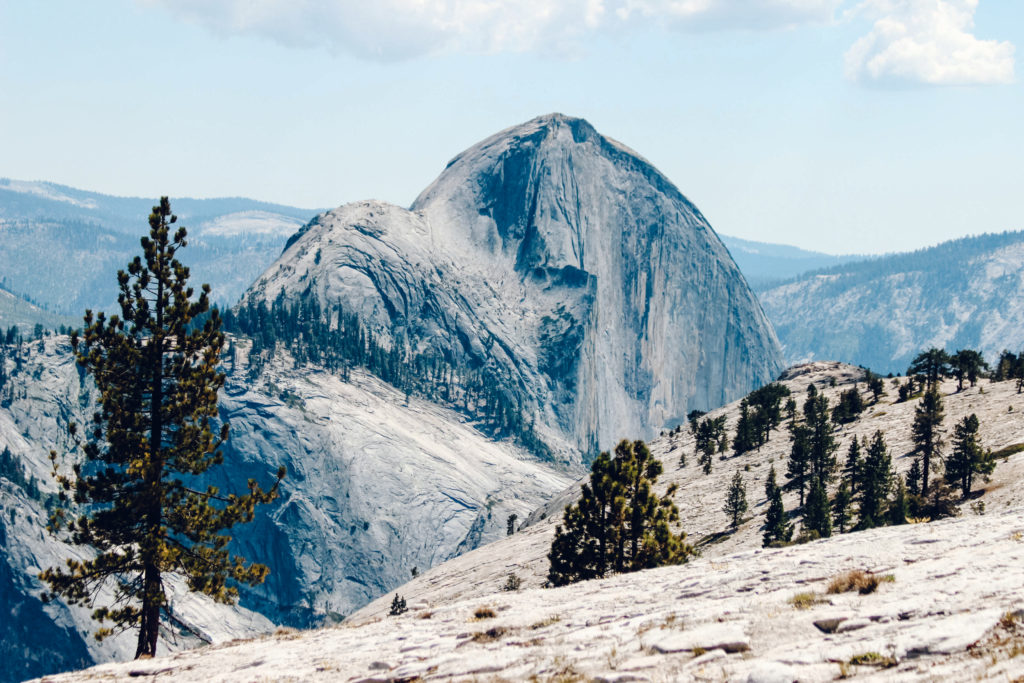
For such a gorgeous – and relatively easy – hike, this trail gets surprisingly little traffic. There is a layby (or pullout in American parlance) on Tioga Road, just before you reach Olmsted Point where I recommend you park. Is a short three mile hike up through thick forest, to the summit of Mount Watkins. Settle in for the night with epic views of Half Dome.
CLOUDS REST
Distance 14.5 miles/23.3 km
Elevation Change 6,000 ft/1828m
Difficulty Strenuous
Trailhead Sunrise
Camp Site Just before the ridge to the summit (Coordinates)
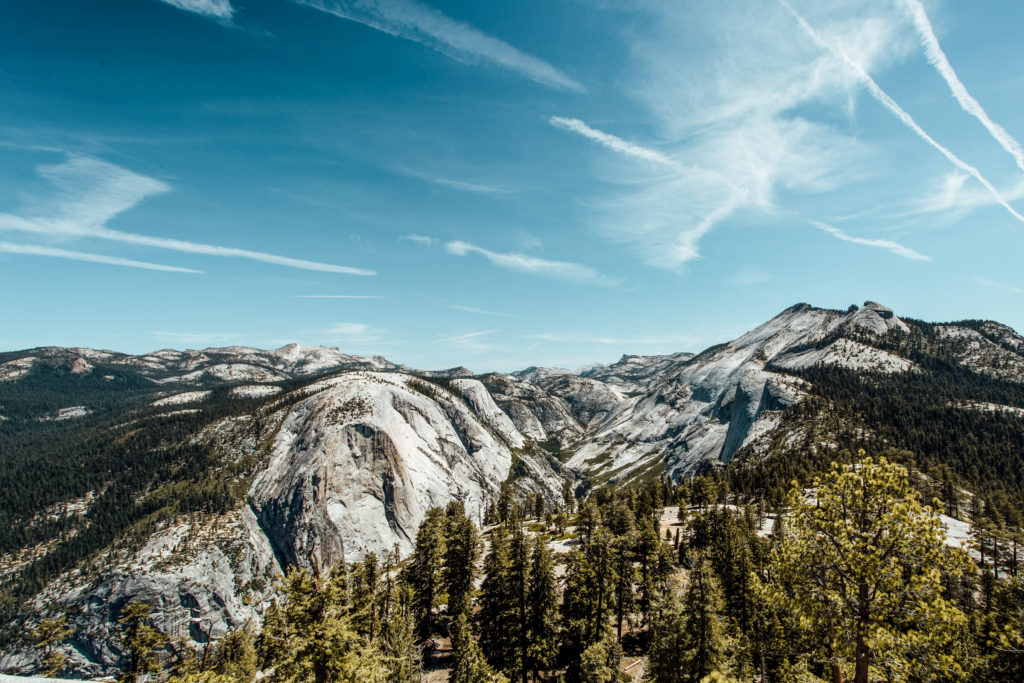
This route is iconic for Yosemite fans. This is a brutal, but amazing, hike to the highest point in Yosemite – it is 1,000ft higher than Half Dome. A whole mile of (seemingly endless) rocky switchbacks make the way down just as tough as the way up. Take a lot of water and sunscreen as the route is exposed. I’d recommend avoiding the hike of summer if you can. Water sources are limited so carry more than you expect you will need.
If heights are not your thing, this may challenge you a bit. There is a narrow ridge just before the summit, with steep drops either side. The 360 views from the top make it all worthwhile though.
As this is a popular route, this may be one to reserve in advance. I’d also recommend setting up your camp before heading to the summit. Camping is not permitted at the top (nor is there much flat ground) so why carry all your kit up…?!
A post hike swim in Lake Tenaya is a glorious way to end this tough trail.
I hope this will help you if you are planning a wild camping trip to Yosemite this summer – I’d love to hear in the comments below which your favourite trails are. If you are looking for more hiking and camping inspiration, check out my other adventure guides.
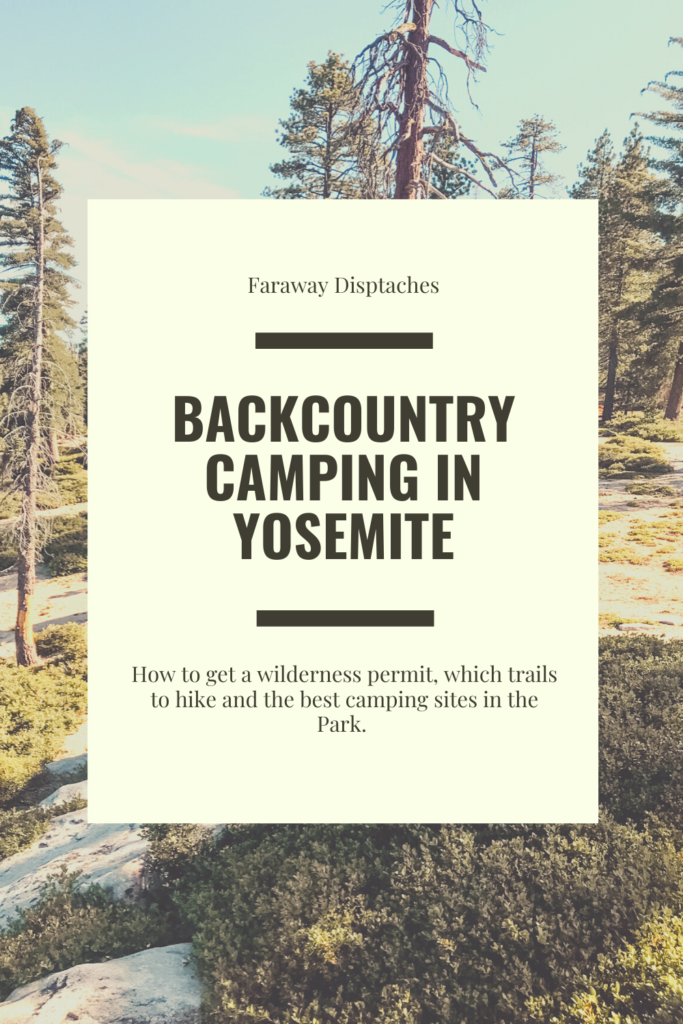
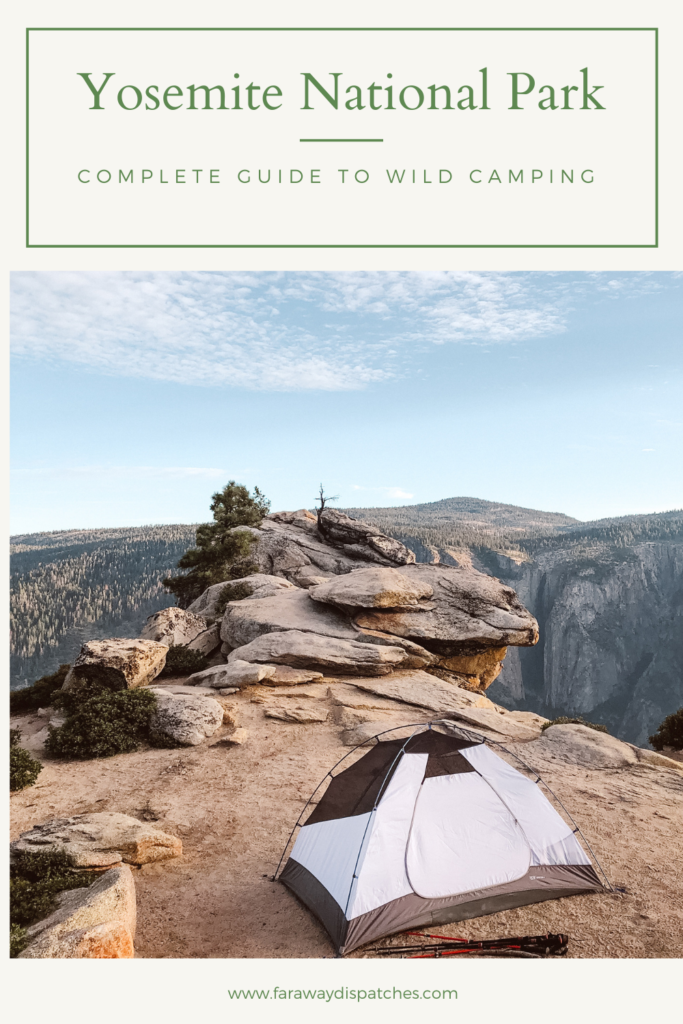




Hello my name is Wilson Mendez I’m a Californian resident and looking forward to take my family to camp in Yosemite since never got the chance to visit.
Looking for an available tent camping spots.
Please let me know how to reserve one.
Thinking about mid August.
Hi! I really hope you have a wonderful visit to Yosemite! You can find all the information for booking the Yosemite campgrounds on the National Park website: https://www.nps.gov/yose/planyourvisit/camping.htm I hope that helps!